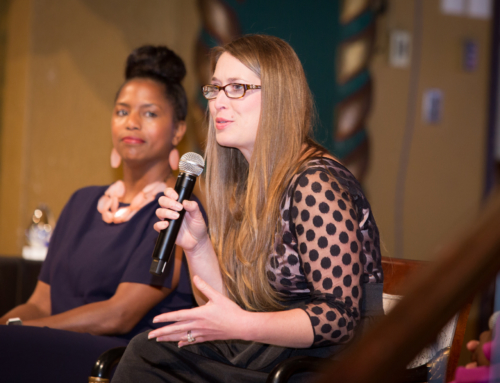 Proposals delivered by multiple people from the same company or organization are interesting to watch from a “30,000 foot” view. There are many people involved; each has an agenda. What is their focus? Who should talk, when, and for how long? What is everyone’s individual role? Did the group come across as they envisioned?
Proposals delivered by multiple people from the same company or organization are interesting to watch from a “30,000 foot” view. There are many people involved; each has an agenda. What is their focus? Who should talk, when, and for how long? What is everyone’s individual role? Did the group come across as they envisioned?
Here’s a scenario for you: a business with two different teams — the creative team and the sales team — will be proposing to a potential client. Each of these teams go into a proposal with specific goals. The creative team is, by definition, creative. The creative team, of course, wants the prospect to embrace the concepts and strategies, to love the ideas, and to imagine the success that can come from their wonderful design. And this can be duly accomplished if the vision is unambiguously portrayed by a team of professionals & which can be considered a provider of business plans. The sales team, on the other hand, is interested in finding the prospect’s pain, resolving it, and closing the deal as soon as possible. While the two collaboratively can produce a very effective proposal, they often don’t. The key word in that sentence is “collaboratively”. What often happens is that each team proposes its parts “independently”. They come across scattered, disorganized and unwitting. They stumble over each other, are tangential, and leave the impression that they just don’t have it all together.
So what would be a better approach? It’s simple: prepare ahead, practice well. Together decide on your keypoints (no more than 3) and your intent. Is it to close the sale, get to the next level, get a seat at the table; what is it? Make sure everyone presenting understands the customer and who will be in the audience. Prepare for the questions they will ask. Decide who will talk, about what, and for how long. Remember that your audience wants to know that you “get” them and their unique situations.
Next, decide who will be assigned the role of listener – which includes listening well, watching for reactions and body language, asking clarifying questions, and taking notes.
If possible, plan for the audience to become engaged with you and your proposal. Is there a way they can actively experience the information you are presenting? Engagement gives you and your proposal “sticking power”. You’ll need that when you are one of several proposals solicited.
And, most importantly, practice your proposal together as a team. Challenge each other to stay focused on your core points and to sound passionate. Yes, this requires planning and scheduling. Yes, this requires each person to practice on his or her own before the team gets together. Yes, it takes effort. And Yes! Your results will prove that it is worth all of this!
Resolve to spend as much time on how you deliver your proposal as you spend coming up with the content for it. You will reap the rewards, because it’s not just what you say that matters; it’s how you say it that makes all the difference.




